What is California known for growing? | What is California known for producing?

- By
- Aparna Patel
- |
- 3 Apr, 2023
- |
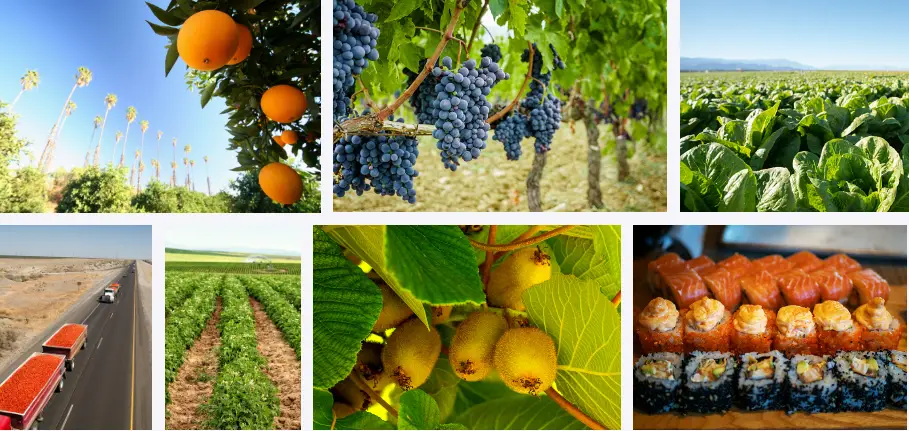
California is renowned for its diverse agricultural industry, producing a vast array of fruits, vegetables, nuts, and grains that are consumed both domestically and internationally.
The state’s climate, soil, and access to water make it an ideal location for farming, with a long growing season and a Mediterranean climate that is particularly conducive to producing high-quality crops.
From the rolling hills of Napa Valley to the vast Central Valley, California’s agricultural regions are home to some of the most productive and innovative farming practices in the world.
In this blog post, we will explore some of the crops that California is known for growing and examine the role that agriculture plays in the state’s economy.
California is known for its abundant agriculture industry and is one of the largest agricultural producers in the United States. The state’s varied climate and fertile soil make it an ideal location for growing a wide variety of crops. Here are some of the crops that California is particularly known for growing:
- Grapes and wine: California is the largest producer of wine in the United States, with the majority of the state’s grapes grown in the Napa and Sonoma valleys.California is the largest producer of wine in the United States, and the state’s wine industry is one of the most important in the world. The majority of California’s wine production takes place in the Napa and Sonoma Valleys, but many other regions throughout the state also produce high-quality wine.
 California’s climate, geography, and geology are all well-suited for wine production. The state’s warm, sunny climate and diverse soils provide ideal growing conditions for a wide variety of grape varieties. Some of the most famous California wines include Cabernet Sauvignon, Chardonnay, Pinot Noir, Zinfandel, and Merlot.
California’s climate, geography, and geology are all well-suited for wine production. The state’s warm, sunny climate and diverse soils provide ideal growing conditions for a wide variety of grape varieties. Some of the most famous California wines include Cabernet Sauvignon, Chardonnay, Pinot Noir, Zinfandel, and Merlot.
The California wine industry is also known for its innovation and experimentation, with many winemakers pushing the boundaries of traditional winemaking techniques to produce unique and exciting wines. In addition, many wineries in California offer tours, tastings, and other experiences for visitors, making wine tourism a significant part of the state’s economy.
Overall, California’s wine industry is a vital part of the state’s economy and culture, and its wines are highly respected and sought-after by wine lovers around the world.
- Almonds: California is the largest producer of almonds in the world, with over 1 million acres of almond trees.
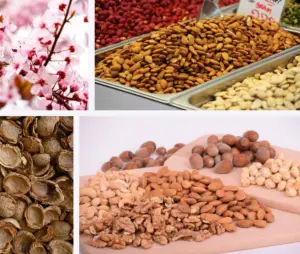
- Avocados: California is the largest producer of avocados in the United States, and the fruit is a staple ingredient in many California dishes.

- Strawberries: California produces more than 90% of the nation’s strawberries, with most of the crop grown in the coastal regions of Southern California.
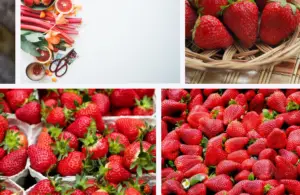
- Oranges and citrus fruits: California is one of the largest producers of oranges in the world, with the majority of the state’s oranges grown in the Central Valley.California is the largest producer of citrus fruits in the United States, with the majority of production taking place in the southern part of the state. Oranges, lemons, limes, and grapefruits are among the most commonly grown citrus fruits in California.The state’s warm, sunny climate and fertile soils provide ideal growing conditions for citrus trees. Most of the citrus orchards in California are located in the Central Valley, but some are also found in the southern coastal regions.
California’s citrus industry is an important part of the state’s economy, providing jobs and revenue for many communities. In addition to fresh fruit, citrus is also used in a variety of products, such as juice, marmalade, and essential oils.
The state’s most famous citrus product is the navel orange, which was first grown in Riverside, California in the late 1800s. Navel oranges are now grown in many parts of the world, but California remains one of the largest producers.
California’s citrus industry faces challenges from pests and diseases, including the Asian citrus psyllid and huanglongbing disease, which can devastate citrus trees. However, growers and researchers are working to develop new strategies to control these threats and ensure the continued success of the state’s citrus industry.
- Tomatoes: California is the largest producer of tomatoes in the United States, with the majority of the crop used for processing into canned tomatoes, sauces, and other tomato products.
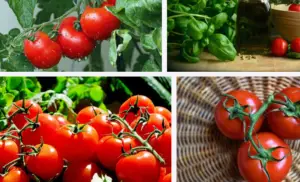
- Lettuce and leafy greens: California produces a wide variety of lettuce and salad greens, with the majority of the crop grown in the Salinas Valley. California is one of the largest producers of lettuce and leafy greens in the United States, with the majority of production taking place in the Salinas Valley and Imperial Valley regions. Some of the most commonly grown leafy greens in California include lettuce, spinach, kale, and arugula.The state’s mild climate and fertile soils provide ideal growing conditions for lettuce and leafy greens, which thrive in cooler temperatures and need plenty of water. Many California growers use drip irrigation systems to conserve water and reduce waste.
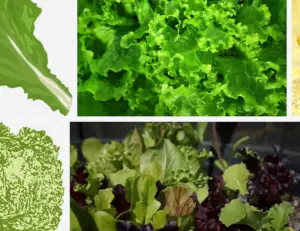
Lettuce and leafy greens are an important part of California’s agricultural industry, with the state producing over 70% of the nation’s lettuce and over 80% of the nation’s leafy greens. These crops are not only consumed fresh, but are also used in a variety of products, such as salads, sandwiches, and smoothies.
California’s lettuce and leafy greens industry has faced challenges in recent years from foodborne illness outbreaks, which have been linked to contaminated products. As a result, growers and processors have implemented new food safety measures and testing protocols to ensure the safety and quality of their products.
Overall, California’s lettuce and leafy greens industry plays a significant role in the state’s economy and provides fresh, healthy produce to consumers around the country.
- Broccoli and cauliflower:California is one of the largest producers of broccoli and cauliflower in the United States, with most of the production taking place in the Central Coast and Salinas Valley regions. These vegetables are cool-season crops that thrive in California’s mild coastal climate.Broccoli and cauliflower are members of the cabbage family and require well-drained soils that are rich in organic matter. These crops are high-yielding and can be harvested multiple times throughout the growing season.
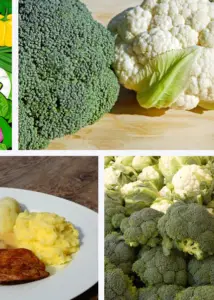
California’s broccoli and cauliflower industry is an important part of the state’s agricultural economy, providing jobs and revenue for many communities. These vegetables are used in a variety of dishes, such as salads, stir-fries, and casseroles.
The majority of California’s broccoli and cauliflower are sold fresh, but some are also frozen or canned for later use. These vegetables are highly nutritious and are a good source of vitamins, minerals, and fiber.
California’s broccoli and cauliflower industry has faced challenges in recent years from pests and diseases, as well as competition from other producing regions. However, growers and researchers are working to develop new strategies to overcome these challenges and ensure the continued success of the state’s broccoli and cauliflower industry.
- Artichokes: California is the largest producer of artichokes in the United States, with most of the production taking place in the coastal regions of the state. The majority of California’s artichokes are grown in the Castroville area, which is known as the “Artichoke Capital of the World.”Artichokes require cool, moist growing conditions, which are provided by California’s coastal climate. The plant is a member of the thistle family and grows best in well-drained soils that are rich in organic matter.
California’s artichoke industry is an important part of the state’s agricultural economy, providing jobs and revenue for many communities. Artichokes are a high-value crop, with prices often higher than other vegetables like lettuce or carrots.

The majority of California’s artichokes are sold fresh, but some are also canned or frozen for later use. Artichokes are a popular vegetable, prized for their unique flavor and versatility in a variety of dishes, such as salads, dips, and casseroles.
California’s artichoke industry has faced challenges in recent years from pests and diseases, as well as competition from other artichoke-producing regions like Italy and Spain. However, growers and researchers are working to develop new strategies to overcome these challenges and ensure the continued success of the state’s artichoke industry.
- Pistachios: California is the largest producer of pistachios in the United States, and the state’s pistachio industry has grown rapidly in recent years. Most of California’s pistachio production takes place in the San Joaquin Valley, which provides ideal growing conditions for the trees.
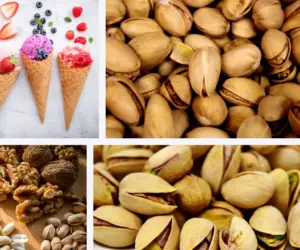 Pistachio trees require a long, hot growing season and plenty of water, and California’s climate and irrigation systems provide these conditions. The trees also require a period of cold dormancy in the winter, which is provided by the region’s cool nights and occasional frosts.
Pistachio trees require a long, hot growing season and plenty of water, and California’s climate and irrigation systems provide these conditions. The trees also require a period of cold dormancy in the winter, which is provided by the region’s cool nights and occasional frosts.
The majority of California’s pistachios are sold as shelled nuts, but some are also sold in the shell. Pistachios are a popular snack food, but are also used in a variety of products, such as ice cream, baked goods, and salads.
The pistachio industry is an important part of California’s agricultural economy, providing jobs and revenue for many communities. In addition, pistachios are a high-value crop, with prices often higher than other nuts like almonds or walnuts.
California’s pistachio industry has faced challenges in recent years from drought and other environmental factors, as well as competition from other pistachio-producing countries like Iran and Turkey. However, growers and researchers are working to develop new strategies to overcome these challenges and ensure the continued success of the state’s pistachio industry.
Q: What is California known for growing?
A: California is known for growing a wide variety of crops, including fruits, vegetables, nuts, and grains.
Q: What are some of the most popular fruits grown in California?
A: California is the top producer of many fruits, including strawberries, grapes, avocados, peaches, oranges, and lemons.
Q: What vegetables are commonly grown in California?
A: California is a major producer of many vegetables, including lettuce, tomatoes, broccoli, cauliflower, carrots, and onions.
Q: What nuts are grown in California?
A: California is the largest producer of almonds in the world, and also grows significant amounts of walnuts, pistachios, and pecans.
Q: What grains are grown in California?
A: California produces a variety of grains, including wheat, corn, and rice.
Q: Why is California such a good place for agriculture?
A: California’s climate, soil, and access to water make it an ideal location for agriculture. The state has a long growing season, with mild winters and warm summers, and a Mediterranean climate that is particularly well-suited for growing fruits and vegetables.
Q: What role does California agriculture play in the state’s economy?
A: Agriculture is a major industry in California, contributing billions of dollars to the state’s economy each year. The state’s agricultural products are also exported all over the world, making California a major player in the global food market.
Read about California
- What is California known for fruit?
- What is California known for agriculture?| What vegetable is California known for?
- Why are redwood trees so big?| How tall are redwood trees?
- What is Redwood National Park famous for?
- What city are the redwoods in California?
- Why do redwoods only grow in California?
Overall, California is known for its diverse and abundant agriculture industry, with a wide variety of crops grown throughout the state.
Search Posts
Latest posts
-
4 Mar, 2024
How to make dining alone less awkward?
-
5 Mar, 2024
Why prohibit engine braking?